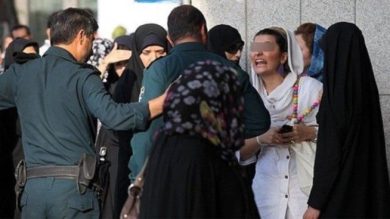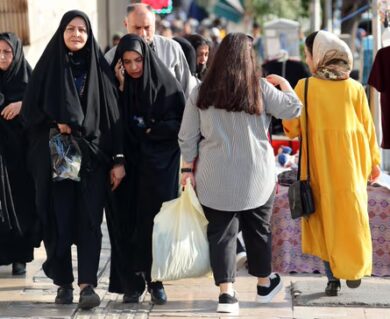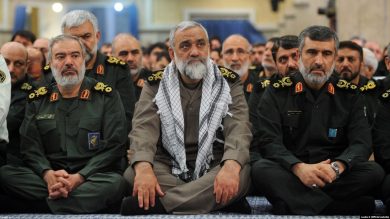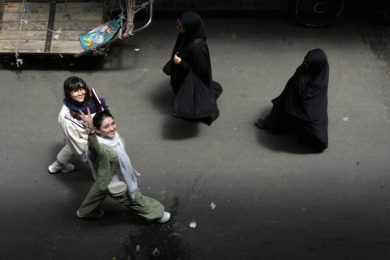In a country where dissent is often met with arrest and censorship, Iranian women have found a new battlefield—online. Armed not with weapons, but with smartphones and hashtags, they are defying decades of repression, pushing back against the state’s control over their bodies, voices, and futures. The Islamic Republic of Iran, and particularly the Islamic Revolutionary Guard Corps (IRGC), has long enforced strict limitations on women’s rights—especially through laws like compulsory hijab. Yet, the rise of social media platforms has given Iranian women new power to organize, communicate, and inspire global attention.
This article explores how social media has become a critical tool for Iranian women in their struggle for freedom, and how hashtags like #MyStealthyFreedom, #WhiteWednesdays, and #WomenLifeFreedom have transformed into powerful movements that transcend borders.
1. The Political Power of the Hijab in Iran
The hijab is not just a piece of fabric in Iran—it’s a symbol of state control. Since the 1979 Islamic Revolution, wearing the hijab has been mandatory for all women in public, regardless of their beliefs or preferences. Enforced by the morality police and backed by the IRGC, hijab laws serve as a visible expression of the regime’s broader agenda of gender control.
For many Iranian women, resisting the hijab is not about religion—it’s about choice and agency. Removing the hijab in public, sharing images online without it, or speaking out about personal freedom is seen by the regime as an act of rebellion, often punishable by fines, imprisonment, or worse.
2. How Social Media Became a Weapon for Resistance
Despite the regime’s efforts to control the internet, block platforms, and monitor activists, Iranian women have creatively used social media as a platform for protest and empowerment. Platforms like Instagram, Twitter (X), Telegram, and Clubhouse have enabled women to:
• Share uncensored stories about repression, abuse, and resistance.
• Organize protests and raise awareness of upcoming events.
• Amplify the voices of those imprisoned or silenced.
• Document abuses, such as videos of arrests or assaults by IRGC agents.
• Connect with global audiences and allies in the diaspora.
3. Hashtags That Became Movements
#MyStealthyFreedom
Launched by Masih Alinejad, an Iranian journalist in exile, this campaign encouraged Iranian women to post photos of themselves without the hijab, often in public places. The campaign’s goal was simple yet revolutionary: to normalize the act of choice.
Millions viewed and shared the images. What began as individual acts of defiance turned into a collective movement that challenged the regime’s narrative.
#WhiteWednesdays
Another campaign by Alinejad, this movement called on women to wear white scarves on Wednesdays as a silent protest against mandatory hijab laws. Women posted photos and videos online, creating a sense of community and resistance, even among strangers.
#WomenLifeFreedom
Originally a Kurdish slogan, this phrase exploded on social media following the death of Mahsa Amini in police custody in 2022. It became the defining chant of the 2022 nationwide protests, uniting women (and men) across regions, ethnicities, and generations under a call for fundamental change.
These hashtags have done more than raise awareness—they’ve become rallying cries for a revolution.
4. Notable Voices of Digital Resistance
Masih Alinejad
With over a million followers, she’s arguably the most prominent digital activist against compulsory hijab. Despite assassination and kidnapping attempts by the IRGC, Alinejad continues to mobilize resistance from exile, turning hashtags into global headlines.
Sepideh Gholian
A labor rights activist who spent time in Evin Prison, she documented her experience and continues to post defiant messages even after re-arrest. Her story shows the power of storytelling even under surveillance.
Niloofar Hamedi and Elaheh Mohammadi
Two journalists who broke the story of Mahsa Amini’s death. Their work triggered one of the largest protest movements in Iran in decades. Both were arrested, and their cases went viral globally, thanks to online awareness campaigns.
5. Risks and Repression by the Regime
The regime is not blind to the power of social media. In fact, the IRGC has developed a vast cyber unit responsible for:
• Monitoring online activity and tracking dissenters.
• Launching propaganda campaigns to discredit activists.
• Conducting phishing and hacking attacks on opposition figures.
• Imposing internet blackouts during protests to prevent viral coverage.
Women who post online are often tracked down, arrested, and coerced into forced confessions aired on state media. Yet despite these dangers, many persist.
6. The Role of the Iranian Diaspora
Iranians abroad have played a crucial role in amplifying the movement:
• Spreading uncensored news through social platforms not accessible in Iran.
• Advocating for policy changes, such as the designation of the IRGC as a terrorist organization.
• Rallying global protests, from Berlin to New York, in support of Iranian women.
The diaspora acts as a bridge, keeping the global spotlight on Iran’s ongoing fight.
7. Why the IRGC Fears Social Media
For a regime that thrives on controlling perception, social media is a threat:
• It bypasses state censorship.
• It gives a voice to the voiceless.
• It humanizes the victims of state violence.
• It connects local resistance to global movements.
The IRGC, known for its role in physical crackdowns, increasingly deploys cyber repression to counteract this influence—yet often fails to fully suppress the digital tide.
8. Challenges Ahead
While social media is powerful, it is not without limitations:
• Internet blackouts during protests hinder live reporting.
• Algorithms on Western platforms may shadow-ban or limit reach.
• Misinformation campaigns from regime supporters create confusion.
• Activists risk arrest, torture, or exile for online activity.
These challenges highlight the need for stronger digital protections, VPN access, and international pressure on tech companies to prioritize freedom of expression.
9. What the World Can Do
To support Iranian women and their digital resistance, the international community must:
• Amplify their stories in global media.
• Pressure tech platforms to protect Iranian users.
• Fund and distribute secure communication tools like VPNs and encrypted apps.
• Sanction IRGC cyber units and individuals responsible for online repression.
• Provide asylum and legal protection for activists under threat.
Conclusion: Hashtags are the New Frontlines
In Iran, a selfie without a hijab is a revolutionary act. A tweet can be a battle cry, and a hashtag can shake the foundations of authoritarian power. Iranian women, through their bold use of social media, have turned platforms once used for leisure into tools for liberation.
Their fight is far from over. But every post, every like, and every share builds momentum toward a future where freedom, equality, and dignity are not just hashtags—but lived realities.
Join Our Newsletter!
Stay informed with the latest updates, news, and ways to take action in the fight for justice and global security. Sign up now to get updates delivered straight to your inbox!





